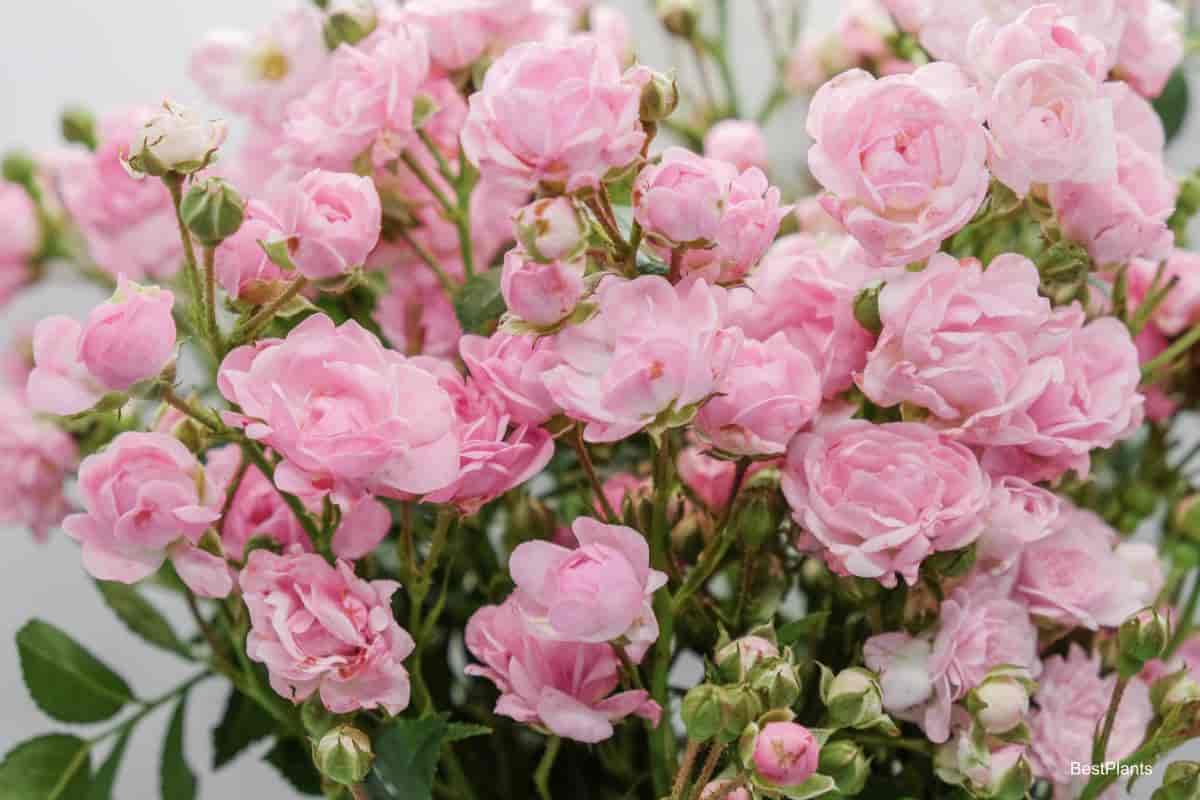Would you like to grow a miniature rose in your window garden this winter? A delightful replica of a regular rose bush with perfectly formed, fragrant flowers? Of course, you would! Who wouldn’t? But wait!

How do you rate yourself as a gardener? Does philodendron thrive for you? If you can answer “yes,” then proceed to the next question.
Can you flower an African violet, a geranium, or a begonia in your window garden? If you can answer a reasonably hearty “yes” again, your chances with a miniature rose are promising!
Related: Miniature Roses: The Jewels Of The Rose Family
Cultural Requirements For Dwarf Roses Indoors
The cultural requirements for growing a baby rose indoors are a sunny window and lots of humidity. 60% to 70% percent are ideal. Providing so much moisture in the air presents any gardener with a challenge, but these miniature roses are worth whatever trouble you expand on them.
Every house should have a humidity of at least 50% percent. Providing the extra ten to 20% percent shouldn’t be impossible if you already have this. The old suggestion to keep the pots sitting on a tray of moist sand, pebbles, or peat moss helps, but the coarse grade of vermiculite is best. Vermiculite in the tray provides a more moisture-evaporating surface than any other medium.
Depending on the source, your miniature rose may come as a growing plant or a dormant bush with dead-looking canes. For planting soil, mix equal parts of loam, leaf mold, sand, and well-rotted cow manure. A 5” or 6” inch pot is ample room for the roots of these small bushes.
Water well after potting, and sink your little rose in a protected spot in the garden. If you have a cold frame, that’s where the rose should be. Right after Christmas, bring the rose to a sunny window where the night temperature is from 60° to 65° degrees.
Cover the plant with a polyethylene bag to help the dormant canes make growth to keep the humidity high. When change becomes apparent, the load may be left off.
Sudden Temperature Changes – Bad
Sudden temperature changes are bad for indoor-grown roses. Good ventilation is necessary to discourage mildew. Fresh air should come from a window in another room so that cold drafts will not strike the rose.
When the rose is in active growth, the soil should be kept moist but not soggy wet. The soil must be well-drained. Feed the plant every two or three weeks with a liquid house plant fertilizer, according to the directions on the container.
If you pinch out the soft tip of the new growth, a bushier plant will be your reward, and you’ll eventually get more flowers. It sometimes helps spray the bush daily with water to provide more humidity. Watering should be done in the morning to dry the moisture by night. Otherwise, mildew will cause trouble.
Red spider mites will be present if the temperature is too hot and the humidity too low. They may be present anyway, under the best of conditions. The same sprays you would use for roses outdoors are in order here. I’ve found a handy aerosol-type spray for roses that is practical for roses indoors. This spray contains an effective fungicide, insecticide, and miticide.
If you have no sunny window, consider growing miniature roses with fluorescent lights. For best results, use a fluorescent reflector 15” inches wide by 48” inches long with three 40-watt daylight tubes. These should burn 15 or 16 hours out of every 24. Under fluorescent light, miniature roses must be close to the tubes – six to eight inches.
When the weather gets warm in the spring, prune back your miniature rose and plant it outdoors in the garden.
If you desire to grow it indoors the following winter, keep it potted. Repotting can be done in the spring or the fall, but it should be done once a year. Knock off part of the old soil and repot in a new pot, either the same or one size larger.
Related: Learn How To Protect Roses In Winter
Miniature Roses from Seeds
Last spring, I obtained a packet of Rosa polyantha nano seeds. These were first “planted” in a half-inch of water in a refrigerator dish and placed in the freezer. The seeds were put into the freezing unit on April 23. On May 15, I removed the container, melted the ice, and planted the seeds in a mixture of peat moss and sand.
By May 29, they had several sets of true leaves, and they came into full bloom the last of June. These miniature rose seeds have produced neat little bushes, nine to 12” inches high, and sweet-scented single and semi-double flowers in pink rose and white shades.
These are hardy, and we have planted them as a permanent border for a rose bed. Look in your seed catalogs for a source of tiny rose seeds.
